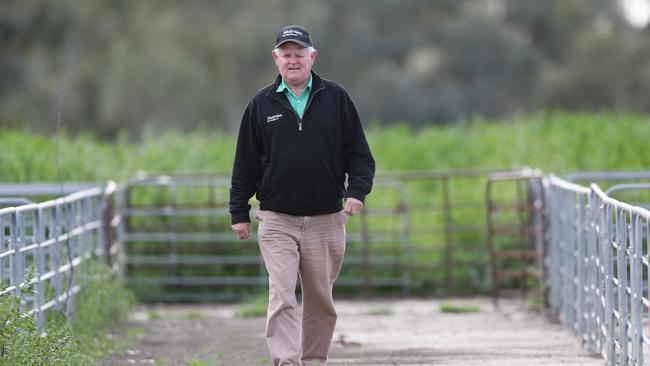Dry winter drops state’s crop potential after bumper start to the season
The state’s primary producers are keeping their fingers crossed for decent rainfall this week, with the season hanging in the balance after a dry winter.

SA Business
Don't miss out on the headlines from SA Business. Followed categories will be added to My News.
- Grain handler needs 1800 more workers
- Prizes, discounts, freebies: Check out the latest subscriber rewards
It’s crunch time for the state’s farmers, as rain is needed in the next two weeks to keep hopes alive for a good season.
After a great start to the season in many areas, winter rainfall has been well below average.
Further falls are crucial, with the latest PIRSA crop and pasture report showing the area under crop across the state is significantly higher than the five-year average. Around four million hectares has been sown for the 2020-21 growing season.
Bordertown livestock agent Graeme Hampel said while there was still plenty of potential for crops in the South East, without rain in the next two weeks they will start to struggle.
Stock feed has also been slow this season, due to the cold and frosty conditions.
“Crops are still looking good, but feed has been slow to grow. We’ll certainly need some rain within the next 10 days,” he said.

PIRSA’s senior industry adviser Dave Lewis, said the good start to the 2020-21 growing season meant seeding in some districts was completed earlier than usual and close to normal for the rest of the state.
“Canola, lentil and bean crop areas have significantly increased on last year due to the good soil moisture (at the start of the season) along with a slight increase to the wheat area,” he said.
“The barley area is also average, despite many growers swapping it at the last minute for other crops in response to China’s decision to impose tariffs.”
But he added that the area sown for hay was smaller than last season’s.
Mr Lewis said early sown crops have emerged rapidly while later sown crops have experienced slower growth due to the dry, cold frosty conditions in early June.
“Slow-growing crops on parts of Eyre Peninsula that have not had a chance to sufficiently cover soil, have suffered sand blasting damage from the strong winds associated with vigorous cold fronts,” he said.
“The cold and frosty conditions also impacted on pasture growth, and while most livestock remain in good condition, producers in most districts have had to resume supplementary feeding due to the slowing pasture growth and high livestock prices.”
MORE NEWS
SA’s best performing country schools for NAPLAN
NAB moves to half-day openings in regional branches
Mr Lewis said June rainfall varied from above average in the Adelaide Hills to very much below average in parts of the Northern Mallee and Eastern Eyre Peninsula, and July was much drier than average across the state.
“Conditions remain extremely dry across most parts of the pastoral zone with areas experiencing below average to very much below average rainfall with the northern pastoral districts receiving little or no rain for the month (of July),” he said.
Mr Lewis said producers’ access to herbicides and insecticides had been hit by increased demand due to the easing of drought conditions in the eastern states.
